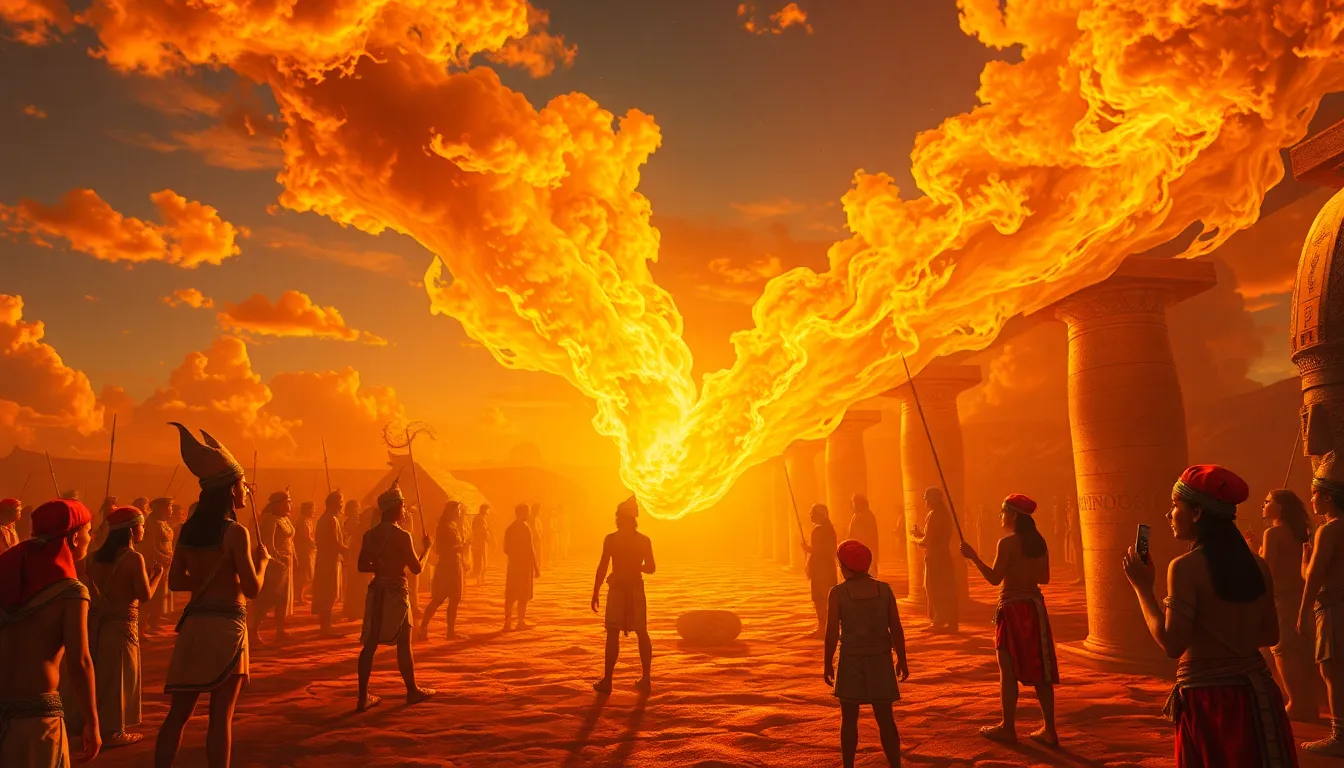The Festival of the Opening of the Mouth: A Rite of Passage
I. Introduction
The Festival of the Opening of the Mouth is a significant ancient Egyptian rite that played a crucial role in funerary practices. This ceremony was believed to restore the deceased’s ability to speak, eat, and drink in the afterlife, marking an essential transition from the mortal realm to the eternal one.
In ancient Egyptian culture, this festival held deep religious significance, serving as a vital component in the complex rituals surrounding death and resurrection. This article will explore the historical context, ritual significance, and cultural impact of the Festival of the Opening of the Mouth.
II. Historical Background
The origins of the Festival of the Opening of the Mouth can be traced back to the early dynastic period of ancient Egypt, where it emerged as a necessary rite for preparing the deceased for the afterlife.
Over the centuries, the festival evolved, adapting to the changing religious and cultural landscapes of different dynasties. Key figures associated with the festival include:
- Osiris: The god of the afterlife, whose resurrection was central to Egyptian beliefs.
- Anubis: The god of embalming and the protector of the dead, who played a crucial role in the funerary process.
- Priests: Those who officiated the rites, often belonging to specific priestly families dedicated to funerary practices.
III. Ritual Significance
The “Opening of the Mouth” ceremony symbolized the restoration of life and the ability to partake in the offerings presented to the deceased. This act was believed to enable the deceased to communicate with the living and partake in the sustenance of the divine.
This ritual was intimately connected to the afterlife and the beliefs surrounding resurrection. It was essential for ensuring a successful transition to the next life, as it allowed the deceased to regain their senses and participate in their own funerary rites.
IV. The Ceremony: Step-by-Step
The ceremony was meticulously structured, beginning with preparatory rituals that often took place in the presence of family members and priests. These included:
- Purification of the body and ceremonial objects.
- Recitation of prayers and spells to invoke the gods.
During the ceremony itself, key components included:
- The symbolic “opening” of the mouth using a ceremonial tool known as the kherep (a type of adze).
- Offerings of food, drink, and incense to the deceased.
Priests played a vital role, donning specific garments and performing rituals that invoked the presence of the gods. They often recited sacred texts and performed symbolic actions that were believed to empower the deceased for their journey into the afterlife.
V. Cultural Context
The Festival of the Opening of the Mouth occupied a significant place within the broader framework of ancient Egyptian religious practices, showcasing the Egyptians’ intricate beliefs about death and the afterlife.
When compared to other rites of passage in different cultures, such as the Japanese Shinto ceremonies or the Native American Vision Quest, the Festival of the Opening of the Mouth reflects similar themes of transition, spiritual rebirth, and the connection between the living and the dead.
Art and architecture also played a crucial role in celebrating the festival. Temples and tombs were adorned with reliefs and inscriptions depicting the ceremony, ensuring that the rituals were remembered and revered.
VI. Artifacts and Symbolism
Numerous artifacts are associated with the Festival of the Opening of the Mouth. These include:
- Tools used in the mouth-opening ceremony, such as the kherep.
- Statues of the deceased, often placed in tombs to serve as vessels for the spirit.
- Offering tables and vessels used for presenting food and drink.
Symbols used during the ceremony, such as the ankh (symbol of life) and the djed (symbol of stability), provided additional layers of meaning and context. Insights from archaeological findings have illuminated how these artifacts were integral to the ritual’s performance and the beliefs surrounding it.
VII. Legacy and Modern Influence
The Festival of the Opening of the Mouth has significantly impacted contemporary understanding of ancient Egyptian culture. Modern archaeologists and historians continue to study the festival to gain insights into the beliefs and practices of ancient Egyptians.
There has been a revival and reinterpretation of the rite in modern spiritual practices, with some contemporary spiritualists seeking to connect with ancient Egyptian traditions through similar rituals that honor the deceased and the afterlife.
Additionally, the festival has been popularized in literature and media, inspiring works that explore the rich tapestry of Egyptian mythology and funerary practices.
VIII. Conclusion
In summary, the Festival of the Opening of the Mouth stands as a significant rite of passage in ancient Egyptian culture, reflecting deep beliefs about life, death, and the afterlife. Its enduring legacy continues to resonate in modern spiritual practices and scholarly pursuits.
This festival not only highlights the intricacies of ancient Egyptian beliefs but also serves as a reminder of the universal human quest for understanding and connection with the mysteries of life and death. The relevance of the Festival of the Opening of the Mouth persists in today’s cultural and spiritual landscape, inviting reflection on our own rites of passage and beliefs about what lies beyond.




